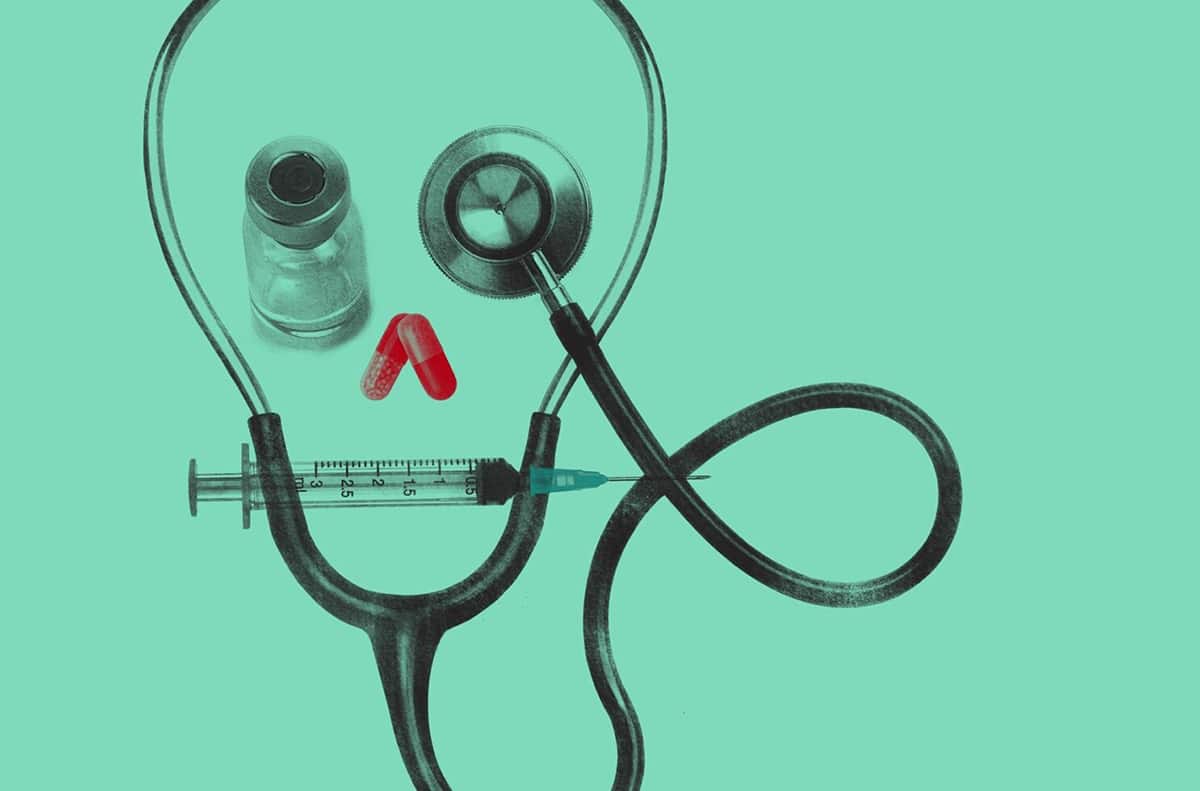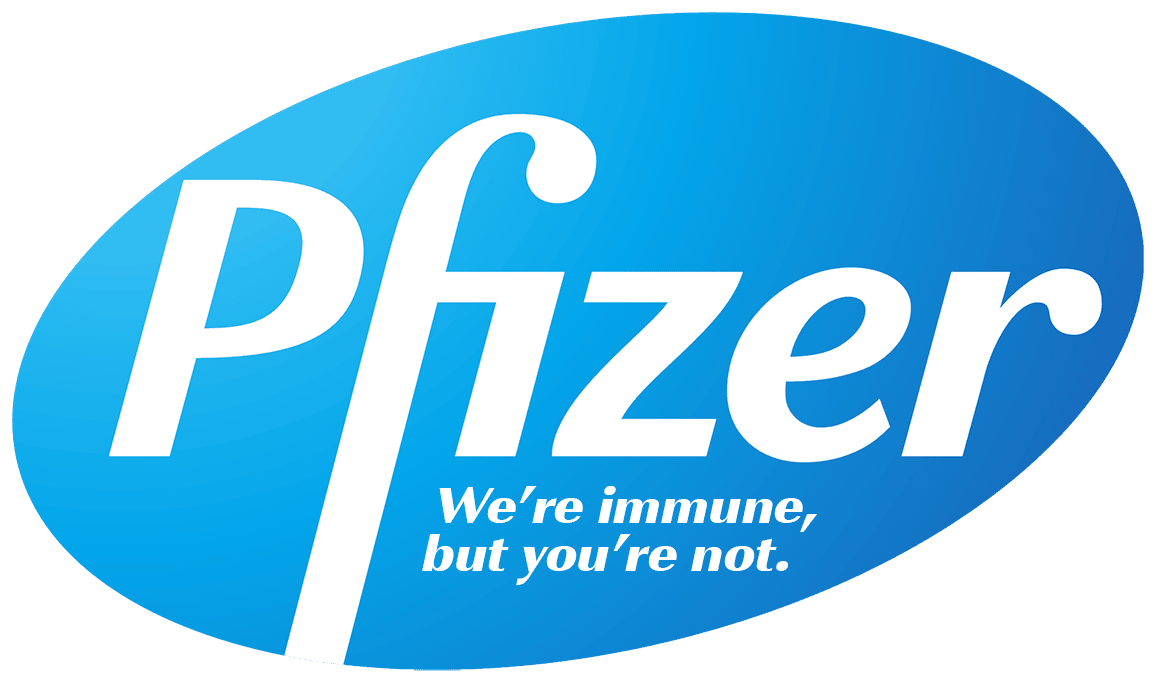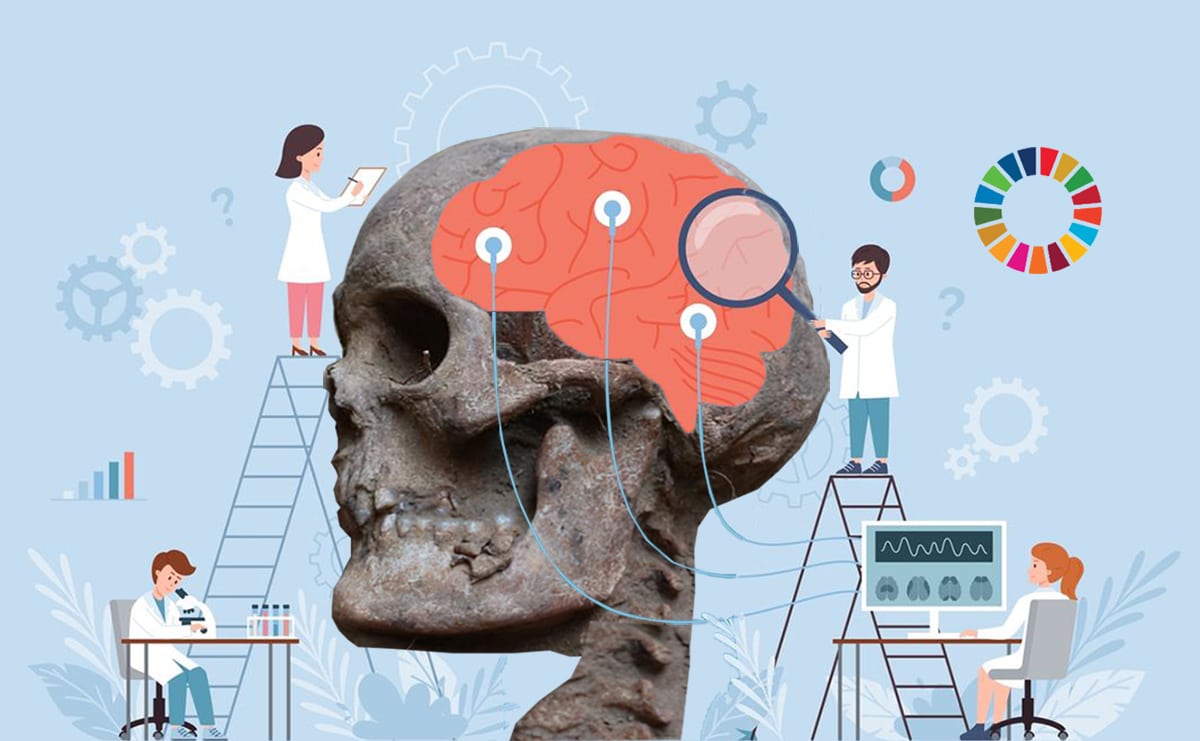

Medical Errors Still the Third Leading Cause of Death?
Analysis by Dr. Joseph Mercola | Aug 25, 2022
STORY AT-A-GLANCE
- In 2013, Americans spent more on health care than Japan, Germany, France, China, the U.K., Italy, Canada, Brazil, Spain and Australia combined. At the time, the U.S. ranked last in terms of quality of care among industrialized nations. Little has changed since then. If anything, conventional medicine has only gotten more dangerous over time
- In 2021, The Commonwealth Fund’s international health care performance report ranked the U.S. dead last out of 11 industrial nations yet again, despite spending more of its GDP (18% as of 2019) on health care than any other nation
- A 2013 review of U.S. health care expenses revealed that 30 cents of every dollar spent on medical care was being wasted on unnecessary services, inefficient delivery of care, excess administrative costs, overinflated prices, prevention failures and fraud. A follow-up investigation in 2019 found the annual waste of health care funds had risen anywhere from $10 billion to $185 billion since 2013, and now accounts for one-quarter of all health care spending
- In 1998, researchers concluded that properly prescribed and correctly taken pharmaceutical drugs were the fourth leading cause of death in the U.S. Since then, several investigations have concluded conventional medicine in general, and medical errors in particular, are among the top leading causes of death in the U.S.
- In 2016, Johns Hopkins patient safety experts calculated that more than 250,000 patients died each year from medical errors, making it the third leading cause of death
I remember 22 years ago as if it were yesterday. It was a warm summer afternoon in July 2000 and at the time I was getting the print copy of JAMA. I was shocked to find the article that completely aligned with my interests, “Is US Health Really the Best in the World?”1 It was written by Barbara Starfield, MD.
Of course, I immediately sped to the article to carefully read it and discovered that buried in tables for the article was the data that physicians were the third leading cause of death in the United States. I created that headline 22 years ago and it has been a meme ever since then, and virtually no one realizes I created it.
Interestingly if you use the Brave search engine (which you should as Google search controls 95% of the searches in the world and steals your privacy) and you type in “Barbara Starfield JAMA July 2000” the first article that comes up is a headline with the meme I created.
For over 15 years when you typed in “doctors are the third leading cause of death,” my article on it from 2000 came up first, but those days are long gone, since Google has censored me out of the search engines for the past six years.
Starfield’s Ironic Tragedy — A Victim to What She Chronicled
Ironically, Starfield became a statistic to her own research. She died suddenly in June 2011, a death her husband attributed to the adverse effects of the blood thinner Plavix taken in combination with aspirin. However, her death certificate makes no mention of this possibility. In many ways, this echoed the COVID jab cover-ups where the true cause of death was obscured and hidden.
In the August 2012 issue of Archives for Internal Medicine,2 her husband, Dr. Neil A. Holtzman, wrote, in part:
“Writing in sorrow and anger, I express up front my potential conflict of interest in interpreting the facts surrounding the death of my wife, Dr. Barbara Starfield … Because she died while swimming alone, an autopsy was required. The immediate cause of death was ‘pool drowning,’ but the underlying condition, ‘cerebral hemorrhage,’ stunned me …
Barbara started taking low-dose aspirin after coronary insufficiency had been diagnosed three years before her death, and clopidogrel bisulfate (Plavix) after her right main coronary artery had been stented six months after the diagnosis. She reported to the cardiologist that she bruised more easily while taking clopidogrel and bled longer following minor cuts. She had no personal or family history of bleeding tendency or hypertension.
The autopsy findings and the official lack of feedback prompted me to call attention to deficiencies in medical care and clinical research in the United States reified by Barbara’s death and how the deficiencies can be rectified. Ironically, Barbara had written about all of them.”
Drug Safety Must Become a Priority, Not an Afterthought
Holzman went on to explain that when a patient dies suddenly (and not while in a health care facility), there’s no routine procedure to notify their physician, even if the patient is autopsied. Therefore, sudden deaths are only in very rare cases ever linked to adverse effects of medical treatment (most common of which is drugs).
In this case, Starfield’s husband personally brought the findings of the autopsy to her doctor’s attention, who subsequently submitted an adverse event report to the FDA, stating that she was receiving Plavix, which may have contributed to her cerebral hemorrhage and subsequent death.
“The report may be the critical action that prompts a modification in use or design of the product, improves the understanding of the safety profile of the drug or device and leads to increased patient safety,” Holzman wrote.
One of Starfield’s points of contention with the current medical system was the lack of systematic recording and studying of adverse events, and her death highlights this situation, as it is quite possible that it was the Plavix-aspirin combination that killed her, yet if it hadn’t been for an autopsy and her husband insisting on an adverse event report, no one would ever have been the wiser about such a connection.
Starfield herself pointed out that her statistics were likely far lower than the real count, as they only included people who died in the hospital. They did not include (as there’s no data) people who suddenly die outside a hospital setting, due to a drug side effect.
What if a sufficient number of adverse event reports had been filed prior to her taking a combination therapy of Plavix and aspirin — would her life have been spared? It’s impossible to speculate of course, but what is clear is that someone’s life would eventually be spared if adverse event reporting were taken seriously.
Plavix sales brought in $6.1 billion during 2010 alone;3 meanwhile, there’s no telling how many Dr. Starfields there are out there, who suddenly collapse and die, and no one is ever made the wiser about their true cause of death.
“As our population ages and morbidities accumulate, the United States needs policies that redirect American medicine to primary care physicians,” Holzman wrote.
“By providing continuing care over time, primary care physicians can practice person-focused as opposed to disease-centered care. They can get to know their patients as persons and become aware of their multiple morbidities, alert to the presence or possibility of disease and/or drug interactions.
… When a specific adverse event is expected (eg, bleeding with clopidogrel), adverse event reporting to FDA should be mandatory, and the manufacturer should be obliged to conduct postmarket surveillance. When a harmful effect is confirmed, the FDA should issue a warning to physicians and require a warning in the package insert. Risks should be weighed against benefits to decide whether the drug should be removed from the market.”
US Health Is Moving in the Wrong Direction
In 2013, Americans spent more on health care than Japan, Germany, France, China, the U.K., Italy, Canada, Brazil, Spain and Australia combined.4 At the time, the U.S. ranked last in terms of quality of care among industrialized nations, and Americans had worse health outcomes compared to most other nations.5
Fast-forward to 2021, and The Commonwealth Fund’s international health care performance report6 ranked the U.S. dead last out of 11 industrial nations yet again, despite spending more of its GDP (18% as of 20197) on health care than any other nation.
According to that report, the U.S. has the lowest access to care, the worst administrative efficiency and the poorest health outcomes. The U.S. also has a staggeringly high infant mortality rate. Out of 195 countries and territories, the U.S. is now in 50th place.8 Life expectancy in the U.S. is also sliding. In 1999, we were in 24th place. Now we’re ranked 67th.9
The US Health Care System Is Fundamentally Flawed
An Institutes of Medicine (IOM) review10 of U.S. health care expenses, published in May 2013, revealed that 30 cents of every dollar spent on medical care was being wasted on unnecessary services, inefficient delivery of care, excess administrative costs, overinflated prices, prevention failures and fraud.
All together, such medical waste added up to $750 billion annually. For perspective, the Pentagon’s proposed defense budget for 2014 was just under $527 billion.11 This waste of funds has also stayed consistent over the years. A follow-up review published in October 2019 noted:12
“Despite efforts to reduce overtreatment, improve care, and address overpayment, it is likely that substantial waste in US health care spending remains …
A search of peer-reviewed and ‘gray’ literature from January 2012 to May 2019 focused on the 6 waste domains previously identified …: failure of care delivery, failure of care coordination, overtreatment or low-value care, pricing failure, fraud and abuse, and administrative complexity.
For each domain, available estimates of waste-related costs … were recorded, converted to annual estimates in 2019 dollars …
Computations yielded the following estimated ranges of total annual cost of waste: failure of care delivery, $102.4 billion to $165.7 billion; failure of care coordination, $27.2 billion to $78.2 billion; overtreatment or low-value care, $75.7 billion to $101.2 billion; pricing failure, $230.7 billion to $240.5 billion; fraud and abuse, $58.5 billion to $83.9 billion; and administrative complexity, $265.6 billion …
The estimated total annual costs of waste were $760 billion to $935 billion … accounting for approximately 25% of total health care spending …”
So, in the years between 2013 and 2019, the annual waste of health care funds rose by anywhere from $10 billion to $185 billion, and now accounts for one-quarter of all health care spending! Clearly, no one is taking this seriously.
The health care industry is also, by and large, ignoring the fact that conventional medicine itself has been a leading cause of death for at least 30 years, and probably a lot longer. That’s how bad it is. People are just not getting much better from all this care — it’s actually killing them.13
Decades of Death by Medicine
In 1998, researchers at the University of Toronto, led by professor Bruce Pomeranz, concluded that properly prescribed and correctly taken pharmaceutical drugs were the fourth leading cause of death in the U.S.14,15
Pomeranz’s analysis was the largest and most complete of its kind at that time. In all, they calculated that somewhere between 76,000 and 137,000 American patients died each year from correctly administered drugs.
Two years later, in 2000, the IOM reported16 that avoidable medical errors were the eighth leading cause of death in the U.S., killing between 44,000 and 98,000 people each year.17
This was followed by a 2003 article aptly titled, “Death by Medicine,”18 written by Dr. Carolyn Dean, Gary Null, Ph.D., Dr. Martin Feldman, Dr. Debora Rasio and Dorothy Smith, Ph.D., which described in excruciating detail how the modern conventional American medical system has bumbled its way into becoming the leading cause of death and injury in the United States, claiming the lives of nearly 784,000 people annually.
Using those figures, that would put the health care system as the No. 1 cause of death in the U.S., bypassing cardiovascular disease. These iatrogenic deaths (meaning deaths resulting from the activity of physicians) include everything from adverse drug reactions and avoidable medical errors, to hospital-acquired infections, surgeries gone bad and deaths from unnecessary medical procedures.
The authors took statistics straight from the most respected medical and scientific journals and investigative reports by the IOM, showing that on the whole, American medicine is causing more harm than good. (For clarity, the reason Dean et. al. came up with a much higher number than anyone else, even in later years, is likely because they included a broader range of mistakes.)
In 2010, a report in The New England Journal of Medicine,19 and another in the Journal of General Internal Medicine,20 revealed just how little things had changed since 2003.
For example, out of 62 million death certificates dated between 1976 and 2006, nearly 250,000 deaths were coded as having occurred in a hospital setting due to medication errors,21 and an estimated 450,000 preventable medication-related adverse events occurred every year.
Three years later, in 2013, a Journal of Patient Safety study22,23,24,25 concluded preventable medical errors kill anywhere from 210,000 to 440,000 patients a year. In 2016, Johns Hopkins patient safety experts, led by Dr. Martin Makary, calculated that more than 250,000 patients died each year from medical errors — the same death count found in 2010.
In 2022, the World Health Organization announced that unsafe care by medical professionals and hospitals result in a “horrifying” 2.6 million deaths each year, worldwide, with at least 250,000 of those in the U.S.26 And, in July 2022, the National Institutes of Health updated their library on medical errors, saying that number could be as high as 440,000 — and possibly even more because of lack of reporting — making it still the third leading cause of death.27
So, medical errors have been the third leading cause of death for years, with 10% of all deaths being attributable to some kind of medical error,28,29 and it continues to be a leading cause of death today, ranking somewhere between third and first place, depending on the scope of medical mistakes you include in your equation.
Avoid Teaching Hospitals in July
It’s worth remembering that medical errors noticeably spike during the month of July each year, particularly in teaching hospitals.30 This phenomenon, referred to as “the July effect,” is explained by the fact that each July, thousands of fresh med students begin their medical residencies and, frankly, they don’t always know what they’re doing.
So, anytime you’re in the hospital, especially during the month of July, check and double-check everything you’re given. Ideally, you should always have a patient advocate at your side — a friend or family member — who can ask questions, take notes and keep track of your treatment. This is by far the most effective way to avoid medical errors.
When it comes to drug-related errors, there are four points in the medication use process at which errors can occur:31
- When the medication is ordered (written, electronic or oral)
- When the medication order is transcribed and verified
- When it’s dispensed
- When it’s administered to the patient
The most common drug errors occurring in hospitals include:
- Excessive dosage resulting in drug overdose
- Prescribing the wrong drug
- Dispensing the wrong drug
- Accidents involving medications during surgery or medical procedures
Older adults are at a higher risk of medication errors and have a greater propensity for experiencing harmful and fatal errors. The most common types of medication errors in older adults are omission and improper dose.
Medical Care Often Dictated by Financial Interests
In her 2008 book, “Overtreated: Why Too Much Medicine Is Making Us Sicker and Poorer,”32 Shannon Brownlee noted that 180,000 hospitalized Americans die every year from largely preventable causes, and the worst part about it, Brownlee says, is that as much as one-third of that care does nothing to improve your health.
Typically, you’ll end up undergoing certain medical tests based on what your physician’s specialty is, not because that’s necessarily the test you need. For example, if you have low back pain and see different specialists, you will get different tests: rheumatologists will order blood tests, neurologists will order nerve impulse tests, and surgeons will order MRIs and CT scans.
Many treatments are also prescribed for the simple reason that the hospital has a vested interest in them. Such is often the case for angioplasties and certain types of chemotherapy, for example.
They have all this equipment and they need to use it to get a return on it — but they also need to get you out of there as quickly as possible, so they can get the next patient in. What ensues is a type of aggressive patient therapy that can end in disaster.
According to the Office of Inspector General (OIG) for the Department of Health and Human Services (DHHS), in October 2008, 27% of hospitalized Medicare recipients were harmed as a result of the medical care they received, and nearly half of these instances were preventable.33 Ten years later, in 2018, the DHHS OIG repeated the study, and found 25% of Medicare patients were harmed during their hospital stay.34
Can Conventional Medicine Survive?
Over the past 19 months, the quality of U.S. health care has gone so rapidly down the tubes, many now refer to hospitals as “killing fields” and “murder factories,” as the most dangerous treatments possible for COVID-19 have been enforced as the sole standard of care.
There are also a disturbing number of accounts of hospitals denying COVID patients food and water, something that would have been unthinkable in years past. The only apparent reason for all this has been financial incentives, as hospitals have received government funding for every COVID test, treatment and death.
To this day, going to a hospital is a risky venture that many will avoid like the plague, and for good reason. There are still plenty of stories in circulation about patients being denied medications, food and water, even if they’re not admitted specifically for COVID, so something appears to have fundamentally changed for the worst.
At the same time, rates of chronic diseases are through the roof. My advice? Take your health into your own hands. Abandon this fatally flawed medical model and embrace holistic modalities that can help you heal on a body-wide level.
Take Control of Your Health
It’s important to remember that the more you take responsibility for your own health — in the form of nurturing your body to prevent disease — the less you need to rely on the “disease care” that passes for health care. In my anniversary article, “25 Health Tips for 25 Years,” I summarize some of the strategies I’ve found most helpful.
The truth is, if you carefully follow some basic health principles — simple things like exercising, eating whole organic foods, sleeping enough and getting sun exposure — you can drastically reduce your need for conventional medical care, which in and of itself will reduce your chances of suffering ill side effects.
In the event you do need medical care, seek a health care practitioner who will help you move toward health by helping you understand the foundational causes of your health challenges, and create a customized and comprehensive — i.e., holistic — treatment plan for you.
What’s more, you can have an impact on your doctor’s tendency to recommend natural alternatives, as when you inquire about them, some health care providers do in fact listen. If they don’t, then keep shopping.
Remember, your doctor works for you, not the other way around. Ideally, it’s a partnership, where you work together to identify the best solutions. Either way, if you’re not satisfied with their know-how or the tools in their toolbox, find another doctor.
And, last but not least, always bring someone with you when you go to the hospital. Now more than ever before, standing firm on your patient rights is essential to ensure a positive outcome.
If you’re seriously ill, it can be very difficult to keep tabs on what they’re asking you to sign and the medications and treatments they’re giving you, so having someone there who can double-check everything — and make sure you receive basic care in the form of fluids and nutrition — can be a life saver.




